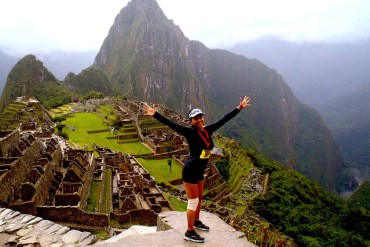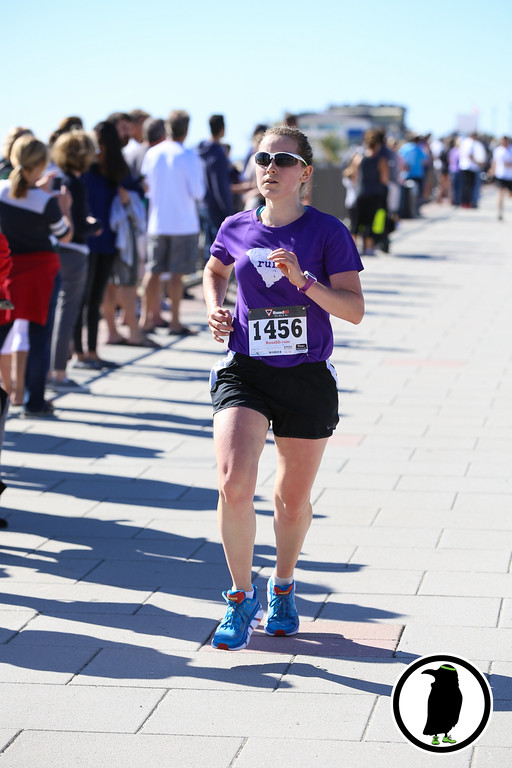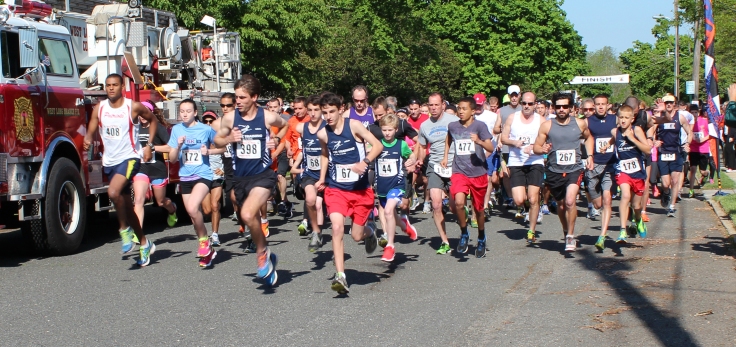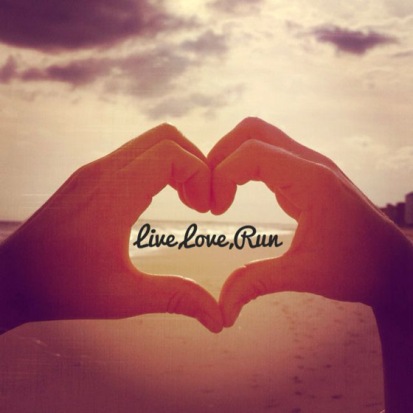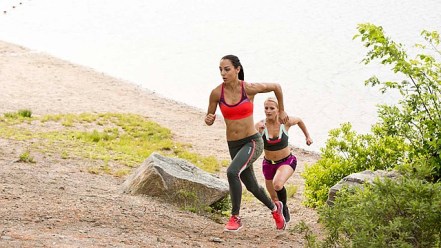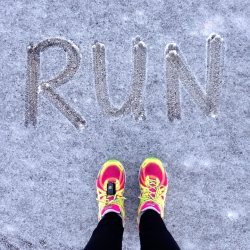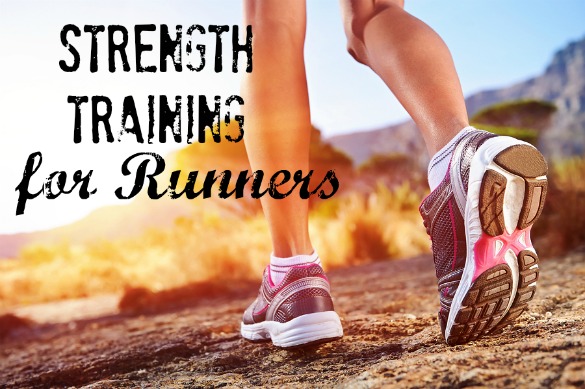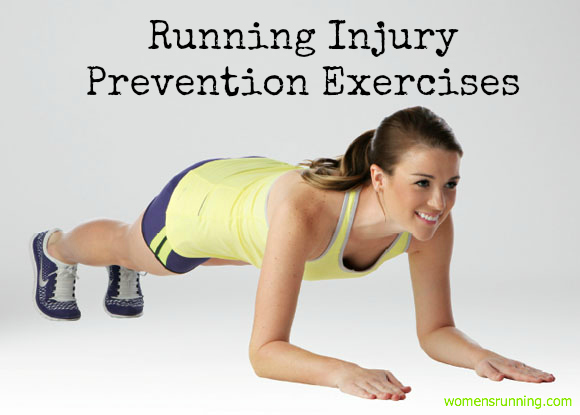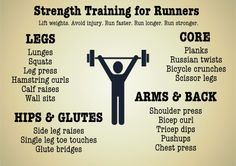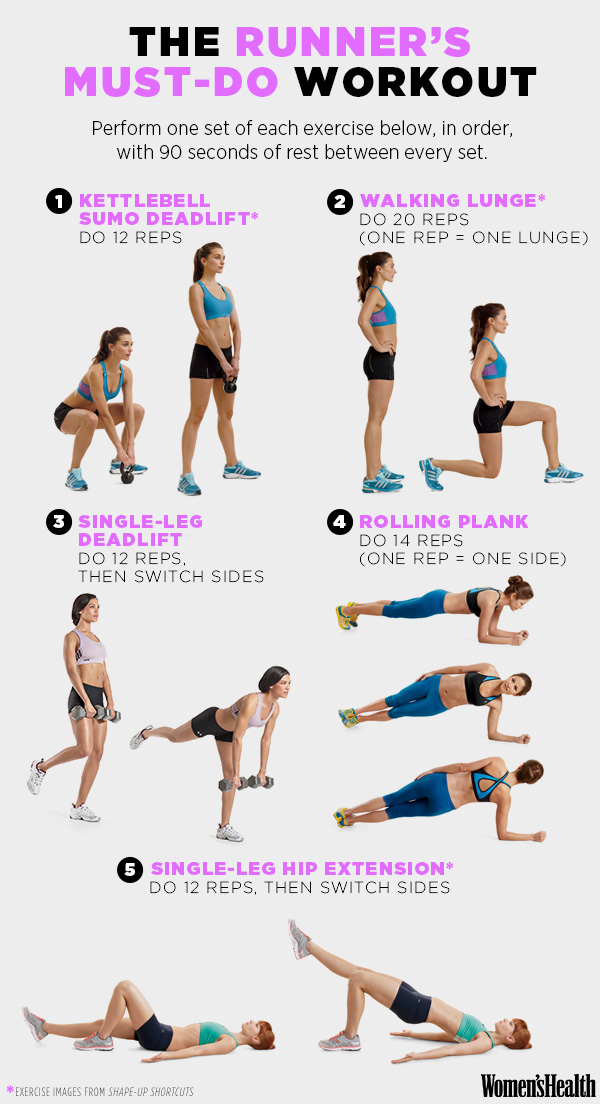By: Angela Ciroalo
Are you considering traveling to a race in another city, state or maybe even country? Try a destination race!
Destination races are great for solo runners, groups of friends, and even families.
They create the opportunity for the runner to visit a new place, take a vacation, meet new people, and participate in a new event.
In an effort to ensure the trip is worry-free, enjoyable and exciting, read my list of nine essential tips to prepare for your next destination race.
Earlier this year I traveled to California to run in a 10k race on the San Leandro Shoreline, a few miles from San Francisco.
The race was a lot fun, the course was beautiful, and the weather was spectacular.
As a result of my travels I shared with you several tips to help you have an awesome time and maybe even set a personal record during your next destination race.
Pack Race Day Gear First
Before packing your favorite bathing suit, that beautiful dress that has been sitting in your closet, or the sunscreen – you may want to start by packing your essential running gear.
Imagine waking up race day morning to find out that your running shoes are sitting on your living room table?
Pack the essentials: shirt, shorts/pants, socks, shoes, gels, belts, headband, hat, or anything else that you run with on a daily basis.
When deciding on your outfit, be sure to check the weather forecast of the race destination.
For those who are concerned their gear might get lost or stolen, another option is to pack race gear in your carry on – or to even wear it during your flight, or while you are traveling.
Use Extra Travel Time to Relax
During your travels try to make time to stretch, drink plenty of fluids, rest if possible, and prevent any unnecessary stress.
Traveling can be difficult for everyone, although when you are preparing for a specific event travel can become exceedingly more difficult.
Use this time to visualize your race, remind yourself of all of the hard work you have done to prepare for this event, congratulate yourself for the success you have achieved thus far – and get excited!
Utilize this extra time during travel to prepare your body, physically and mentally. This way when you are arrive you are fully prepared for the big day.
Race at Beginning or End of Vacation?
When planning your race destination, be cautious of where you place the race date during your trip.
Placing a race at the end of a vacation can leave you depleted and tired on race day. Additionally, you may not be in top shape and your results may suffer.
Scheduling the race in the middle of the trip can cause complications. The race may interfere with the itinerary or other vacation plans.
If possible, schedule your race at the beginning of your trip. This will allow you to race in your top shape, you will be in race mode (not vacation mode), you will be (hopefully) well rested, and you will have plenty of time to vacation and sightsee after the race is over. Most importantly you can celebrate your success throughout the remainder of the trip.
During my recent trip to California, I raced the morning after our flight arrived. Though this was slightly difficult because the flight had landed at 12 am the day prior, I was thrilled because I felt prepared, focused, and the time difference gave me an additional three hours of sleep.
What Do I Eat?
What you will eat the night before, the morning of, during the race, and after the race are all very important factors to take into consideration.
The pre-race meal and the post-race meals are generally the more important meals, therefore you will want to be extra cautious when planning these out.
The last thing you want is to eat food your stomach is not familiar with the night before a race causing you to feel uncomfortable or ill. Stick to the age old tip; don’t try anything new race week.
When choosing a restaurant, pick food that you are familiar with eating the night before a run. In the event of an emergency or issue, be sure to pack snacks and foods that can be easily stored and consumed.
After the race be sure to not wait too long to properly refuel with adequate nutrients.
Some great tools to use when choosing your pre- and post-race meals include Zagat, LocalEats, Open Table or Yelp. These websites and smartphone applications with help you to locate restaurants and eateries that fit your needs.
Transportation to The Race
For those who utilized public transportation to arrive to their location be sure to pre-plan transportation for race morning.
The morning of a race can be stressful, tiring, upsetting and even nerve-wrecking.
In an effort to avoid confusion, or even arriving to the race late, plan your route and method of transportation in advance.
Ordering a taxi cab or using online transportation networks like Uber or Lyft can save you time, energy and money.
During my trip to California I used Lyft to arrive to my race destination race. The cost was inexpensive and the process was accommodating and safe.
Renting a car is another safe option. A can rental can also be beneficial if you plan to sightsee later that day.
Proper Hydration During Travels
Traveling often leaves the body dehydrated and tired. In an effort to avoid this common issue pack a reusable water bottle to use during your trip.
Most hotels offer filtered water to their guests and locations to refill water bottles.
Be sure to drink plenty of fluids the days you are traveling to and from your destination, the day before your race, directly after your race, and during your sightseeing ventures.
Sleep and Rest
It is quite common for athletes to lose sleep the night before a big event.
In an effort to avoid race day fatigue, make an effort to receive adequate sleep the days leading up to the race.
The days leading up to a race are often spent tapering (running less to rest your legs), therefore your body will appreciate the extra sleep.
After tapering and sleeping 8-10 hours before the big day you will arrive to race day fully prepared to give your best effort.
After the race, you will also want to set aside some extra time to rest your legs, sleep, stretch, foam roll and walk.
Proper Post-Race Recovery
After a race it is easy to get caught up in the post-race activities, food and festivities; however these actions can make recovery very difficult.
After your race make time for your regular post-race routine which should include; hydrating with electrolytes and water; re-fueling with adequate protein, carbohydrates and fats as well as vitamins and minerals; stretching and foam rolling; resting and recovering; and getting a good night of sleep.
This may be difficult if you have limited time in your location and you want to squeeze everything in, however keep in mind that chances are you will feel it later.
After my race in California, I showered and went directly out to sightsee and explore.
While this was beneficial for my legs to spend time walking after the race, I did not to take some time to stretch, rest and properly refuel.
As a result, I felt fatigued and sore by the end of the day.
Take it from me, the extra hour of rest, proper refueling, and stretching can make a world of difference while decreasing recovery time dramatically.
Have Fun!
Take photos, do funny poses, make new friends, try new foods, take in the sights, try your best – and have a good time.
The purpose of your trip is to enjoy yourself. Destination races often go down as one of our top 10 favorite races ever completed.
They are filled with a sense of freedom, opportunity, mystery and excitement.
Take this time to enjoy this experience.
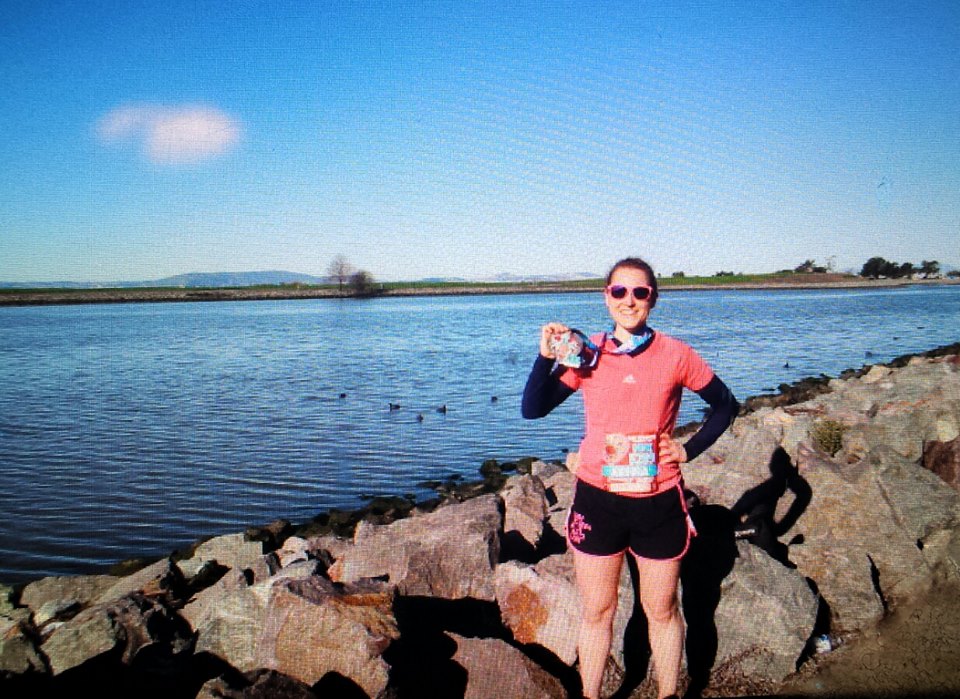
Caption: Me in San Francisco for a destination race in February 2017 – Took first in my age group!
